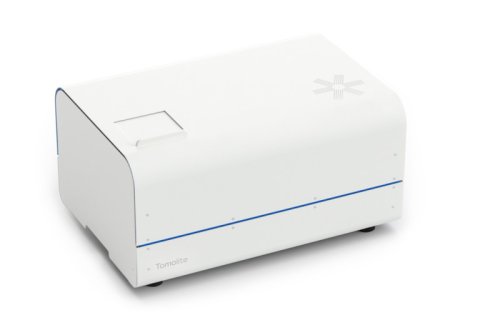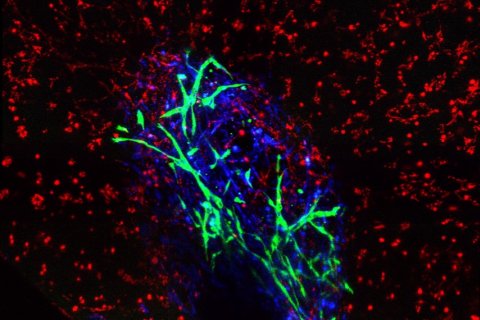New 3D bioprinter to develop a 3D living model of pancreatic tissue
Utrecht, February, 2021 – In the European project ENLIGHT researchers will develop a living model of the pancreas to enable better testing of diabetes medication. This model is manufactured using a new method of bioprinting invented at the UMC Utrecht Utrecht and EPFL, and specialized stem cells studied by ETH Zurich and the University of Naples. Researcher Riccardo Levato: “With eight European partners, we will now develop a new bioprinter that, using visible light, prints stem cells three-dimensionally into functional pancreatic tissues.” ENLIGHT has received a 4-year grant from the European innovation Council fund Horizon 2020. The aim is to realize the first working tissue model within three years.
3.6 million euros
The ENLIGHT partners have been granted a contribution of 3.6 million euros by the European Innovation Fund Horizon 2020. Led by the UMC Utrecht, the multidisciplinary consortium consists of Ecole Polytechnique Federale de Lausanne and ETH Zürich (Switzerland), the University of Naples Federico II (Italy), AstraZeneca (Sweden), Rousselot (Belgium), Readily 3D (Switzerland) and Fondazione Giannino Bassetti (Italy).
Advantages of bioprint tissue

The use of tissue from a 3D bioprinter has a number of major advantages. When testing drugs, for example. These ‘personalized’ models could eliminate the need for animal testing and reduce the burden on individual patients, as they would no longer have to experiment with different drugs until one works. This is not only important for diabetes patients, but can – if the model works – also be used for other diseases, such as cancer. Riccardo Levato, biofabrication researcher at the UMC Utrecht and coordinator of ENLIGHT: “With cells from a patient, practitioners can recreate the diseased tissue . Subsequently, a laboratory test can be performed to determine which candidate medication has the greatest effect. This spares patients a long search with unpleasant side effects, saves on treatment costs, and leads to the best available care for individual patients.’’
Proof of principle

It is no coincidence that the ENLIGHT project initially focuses on diabetes and hence the pancreas with new bioprinting techniques. The pancreas produces enzymes and hormones, including insulin; in diabetes it does not do so or does so insufficiently. “Diabetes is a deliberate choice because of its social relevance. Besides asthma, it is the most common chronic disease in children. Despite the growing demand for care for patients with diabetes, the development of new drugs (besides insulin therapy) is lagging behind,” says Riccardo Levato . “At the same time, the pancreas is our ‘proof of principle”. If we manage to make a living model of the pancreas and actually test diabetes medication with it, this will prove that the new bioprinting techniques work”. Riccardo: “Then we can use those techniques much more widely. In principle, you can make living models of all types of tissue with it.”
Volumetric bioprinter
To make this possible in the future, the ENLIGHT researchers want to force two breakthroughs. The first is a newly developed bioprinter, which can reproduce part of the human body, including living cells, at lightning speed. Where a conventional 3D printer takes an hour, this so-called volumetric bioprinter does it within a minute. This is important because the survival rate of the cells decreases as printing takes longer. Once the bioprinter has created a living 3D model of human tissue, a second step is needed to recreate functionality at the human organ level.

Riccardo: “If you want to fabricate pancreatic tissue, the 3D model not only has to look like that, but it also has to function like a pancreas. We want to achieve this already in the printing phase by adding signaling molecules, which tell the cells , stimulated by the printer, how to behave.” The next four years are aimed at creating a living model of the pancreas, including hormonal functions. In the longer term, the ENLIGHT projects is more ambitious, aiming to provide new tools to resolve the shortage of donor organs for transplantation and regenerative medicine.
 Disclaimer: The project leading to this application has received funding from the European Union’s Horizon 2020 research and innovation programme under grant agreement No 964497
Disclaimer: The project leading to this application has received funding from the European Union’s Horizon 2020 research and innovation programme under grant agreement No 964497
More information on the ENLIGHT project can be found on de EU CORDIS website: https://cordis.europa.eu/project/id/964497

